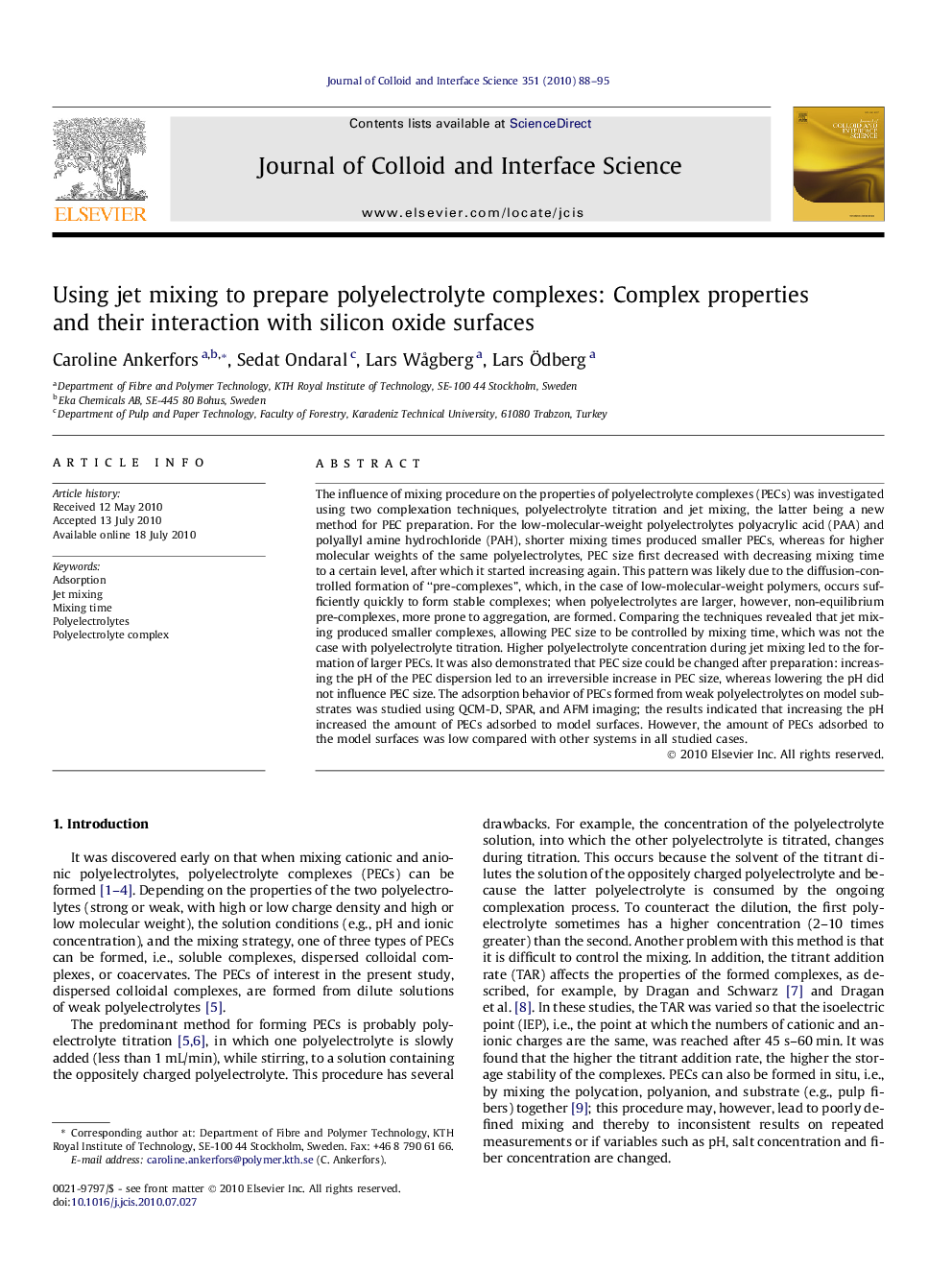| کد مقاله | کد نشریه | سال انتشار | مقاله انگلیسی | نسخه تمام متن |
|---|---|---|---|---|
| 609022 | 880613 | 2010 | 8 صفحه PDF | دانلود رایگان |

The influence of mixing procedure on the properties of polyelectrolyte complexes (PECs) was investigated using two complexation techniques, polyelectrolyte titration and jet mixing, the latter being a new method for PEC preparation. For the low-molecular-weight polyelectrolytes polyacrylic acid (PAA) and polyallyl amine hydrochloride (PAH), shorter mixing times produced smaller PECs, whereas for higher molecular weights of the same polyelectrolytes, PEC size first decreased with decreasing mixing time to a certain level, after which it started increasing again. This pattern was likely due to the diffusion-controlled formation of “pre-complexes”, which, in the case of low-molecular-weight polymers, occurs sufficiently quickly to form stable complexes; when polyelectrolytes are larger, however, non-equilibrium pre-complexes, more prone to aggregation, are formed. Comparing the techniques revealed that jet mixing produced smaller complexes, allowing PEC size to be controlled by mixing time, which was not the case with polyelectrolyte titration. Higher polyelectrolyte concentration during jet mixing led to the formation of larger PECs. It was also demonstrated that PEC size could be changed after preparation: increasing the pH of the PEC dispersion led to an irreversible increase in PEC size, whereas lowering the pH did not influence PEC size. The adsorption behavior of PECs formed from weak polyelectrolytes on model substrates was studied using QCM-D, SPAR, and AFM imaging; the results indicated that increasing the pH increased the amount of PECs adsorbed to model surfaces. However, the amount of PECs adsorbed to the model surfaces was low compared with other systems in all studied cases.
Polyelectrolyte complexes (PECs) were produced by the new jet mixing method, which enabled control of the particle size. The adsorption of PECs was studied using QCM-D, SPAR, and AFM imaging.Figure optionsDownload high-quality image (118 K)Download as PowerPoint slideResearch highlights
► Jet mixing has been used to form colloidally stable polyelectrolyte complexes (PECs).
► Jet mixing allows size control of the PECs.
► The PEC size can be irreversibly changed after formation by changing the pH.
► The adsorption of the complexes to model surfaces was also studied.
Journal: Journal of Colloid and Interface Science - Volume 351, Issue 1, 1 November 2010, Pages 88–95